PhD Candidates
Henry Brett
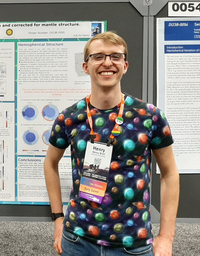 My research is focused on inner core anisotropy, the inner core is a solid ball of iron and nickel and a strong anisotropy is observed by both body waves and normal modes (whole Earth oscillations): yet the observations do not agree on the magnitude of this anisotropy or it’s cause. I am combining normal mode and body wave data to produce a model which satisfies both observation types and hope to combine this with models of inner core growth to improve our understanding of the deepest region of our planet.
My research is focused on inner core anisotropy, the inner core is a solid ball of iron and nickel and a strong anisotropy is observed by both body waves and normal modes (whole Earth oscillations): yet the observations do not agree on the magnitude of this anisotropy or it’s cause. I am combining normal mode and body wave data to produce a model which satisfies both observation types and hope to combine this with models of inner core growth to improve our understanding of the deepest region of our planet.
e-mail: h.brett@uu.nl
phone: +31 (0)30 253 5157
room: VMA 2.14
Leon Diekmann
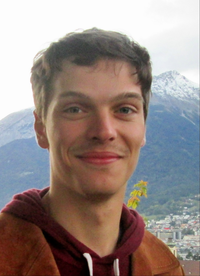 Estimating subsurface parameters, e.g. velocities, from seismic surface data helps to understand the structure and composition of the Earth. Since a couple of years ago, full waveform inversion has been the leading technique for this purpose. Recent advances in redatuming, namely the Marchenko method, might pave the way for the development of a new, alternative inversion strategy. Marchenko redatuming allows for constructing Green’s functions inside an inaccessible volume from seismic surface data. This usually requires a smooth background velocity model – thus, it is independent of high-frequency velocity perturbations. The Green’s functions can then be used for waveform inversion in order to reconstruct these missing perturbations. The aim of my research is to improve the quality of the approximated Green’s functions and to design an appropriate waveform inversion scheme. I am also interested in related ideas, such as the inverse scattering series and the contrast source method. My work is funded by the Utrecht Consortium for Subsurface Imaging (UCSI).
Estimating subsurface parameters, e.g. velocities, from seismic surface data helps to understand the structure and composition of the Earth. Since a couple of years ago, full waveform inversion has been the leading technique for this purpose. Recent advances in redatuming, namely the Marchenko method, might pave the way for the development of a new, alternative inversion strategy. Marchenko redatuming allows for constructing Green’s functions inside an inaccessible volume from seismic surface data. This usually requires a smooth background velocity model – thus, it is independent of high-frequency velocity perturbations. The Green’s functions can then be used for waveform inversion in order to reconstruct these missing perturbations. The aim of my research is to improve the quality of the approximated Green’s functions and to design an appropriate waveform inversion scheme. I am also interested in related ideas, such as the inverse scattering series and the contrast source method. My work is funded by the Utrecht Consortium for Subsurface Imaging (UCSI).
e-mail: l.d.diekmann@uu.nl
phone: +31 (0)30 253 5138
room: VMA 2.22
Rens Elbertsen
My research project is a collaboration between two Utrecht University groups: the Seismology group and High Pressure and Temperature Lab (HPT). We simulate stick-slip behaviour of different fault gouge materials in the laboratory, which are basic analogues of the earthquake process. During these experiments we use Acoustic Emission (AE) sensors to measure the vibrations emitted by the material while it is being sheared. These vibrations are measured close to the fault surface and are therefore of a very high resolution compared to field measurements. Recent studies showed that these kinds of experiments produce measurements of AE that, using Machine Learning (ML) techniques, are able to forecast f.e. the time until the next slip event or the current shear stress on the fault. My goals are to further improve our understanding of how the AE can be linked to microscale processes inside the fault gouge material. To achieve this goal, I am using different combinations of statistics, machine learning, and data science techniques. My project contains both experimental work in the HPT lab and computational work on the High Performance Computing (HPC) cluster.
e-mail: r.s.elbertsen@uu.nl
phone: +31 (0)30 253 5067
room: VMA 2.18, ESL 1.14
Eldert Fokker
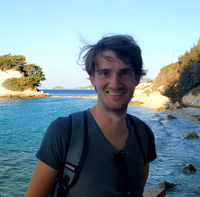 My research focuses on monitoring of the Groningen gas field using seismic noise. The propagation of seismic waves is influenced by the state of the medium (e.g., material type, water content, temperature, stress). One of the studied parameters is the seismic velocity. Relative changes in this velocity can indicate changes in, e.g., water content, temperature or stress. To find such indications I research time-lapse velocity variations, obtained using passive image interferometry. This way I hope to learn about the changing state of the Groningen subsurface.
My research focuses on monitoring of the Groningen gas field using seismic noise. The propagation of seismic waves is influenced by the state of the medium (e.g., material type, water content, temperature, stress). One of the studied parameters is the seismic velocity. Relative changes in this velocity can indicate changes in, e.g., water content, temperature or stress. To find such indications I research time-lapse velocity variations, obtained using passive image interferometry. This way I hope to learn about the changing state of the Groningen subsurface.
e-mail: e.b.fokker@uu.nl
phone: +31 (0)30 253 5087
room: VMA 2.16
Janneke de Jong
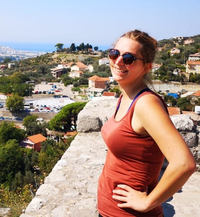 My research is about better understanding the changes in the Groningen gas field that ultimately cause the earthquakes. I focus on figuring out whether we can observe small, geometric changes over time in this region. Using receiver functions of anthropogenic noise generated at the surface and recorded in a 3km deep borehole, I will try to determine exactly how the reservoir changes through time and how this relates to induced seismicity.
My research is about better understanding the changes in the Groningen gas field that ultimately cause the earthquakes. I focus on figuring out whether we can observe small, geometric changes over time in this region. Using receiver functions of anthropogenic noise generated at the surface and recorded in a 3km deep borehole, I will try to determine exactly how the reservoir changes through time and how this relates to induced seismicity.
e-mail: j.h.e.dejong@uu.nl
phone: +31 (0)30 253 5138
room: VMA 2.22
Haorui Peng
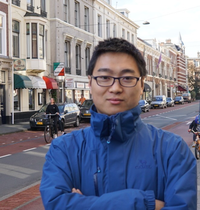 My research is primarily focused on the poroelastic full waveform inversion with the final goal aimed at its application in the gas field. The theories of poroelasticity are essential in many geophysical applications where pore-filling materials are of interest, e.g., oil exploration, gas-hydrate detection, seismic monitoring of CO2 storage, and hydrogeology. Most of my work is theoretical but interesting involving lots of computations with HPC.
My research is primarily focused on the poroelastic full waveform inversion with the final goal aimed at its application in the gas field. The theories of poroelasticity are essential in many geophysical applications where pore-filling materials are of interest, e.g., oil exploration, gas-hydrate detection, seismic monitoring of CO2 storage, and hydrogeology. Most of my work is theoretical but interesting involving lots of computations with HPC.
e-mail: H.Peng@uu.nl
phone: +31 (0)30 253 5138
mobile: +31 (0)6 4535 2881
room: VMA 2.18
Ashim Rijal
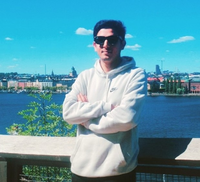 Interpretation of information available from seismic images requires an understanding of the seismic properties of rocks (more precisely, rock forming minerals) at different pressure and temperature environments. In my research I integrate data and modelling from mineral physics, geodynamics and seismology. With the help of probabilistic solutions to the inverse problem using machine learning, it will then be possible to obtain a clearer representation of the Earth’s interior with full uncertainties. The research is supported by Netherlands Organisation for Scientific Research (NWO).
Interpretation of information available from seismic images requires an understanding of the seismic properties of rocks (more precisely, rock forming minerals) at different pressure and temperature environments. In my research I integrate data and modelling from mineral physics, geodynamics and seismology. With the help of probabilistic solutions to the inverse problem using machine learning, it will then be possible to obtain a clearer representation of the Earth’s interior with full uncertainties. The research is supported by Netherlands Organisation for Scientific Research (NWO).
website: https://www.uu.nl/staff/ARijal
e-mail: A.Rijal@uu.nl
phone: +31 (0)30 253 5087
room: VMA 2.16
Rûna van Tent
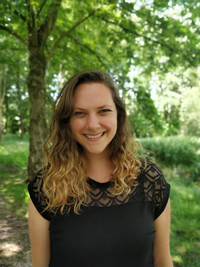 I am studying the effects of mantle azimuthal anisotropy on normal modes, Earth’s free oscillations, which are particularly well-suited to image long-wavelength structure at all depths inside the Earth. Seismic observations of large-scale azimuthal anisotropy are used as an indicator of global flow patterns in the mantle, providing valuable information on mantle dynamics. Models of global mantle azimuthal anisotropy have so far only been obtained using surface waves, which have limited depth-sensitivity. My aim is to find a way to distinguish the signal of azimuthal anisotropy in normal-mode data and identify azimuthally anisotropic regions throughout the mantle.
I am studying the effects of mantle azimuthal anisotropy on normal modes, Earth’s free oscillations, which are particularly well-suited to image long-wavelength structure at all depths inside the Earth. Seismic observations of large-scale azimuthal anisotropy are used as an indicator of global flow patterns in the mantle, providing valuable information on mantle dynamics. Models of global mantle azimuthal anisotropy have so far only been obtained using surface waves, which have limited depth-sensitivity. My aim is to find a way to distinguish the signal of azimuthal anisotropy in normal-mode data and identify azimuthally anisotropic regions throughout the mantle.
e-mail: r.m.vantent@uu.nl
phone: +31 (0)30 253 5087
room: VMA 2.16
David Vargas
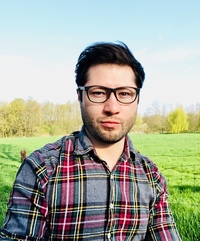
Extracting as much information as possible from seismograms to construct high-resolution images drives most of the research in exploration seismology. Seismic recordings allow us to reconstruct 3D maps of the subsurface to better understand geological processes, by using seismic imaging and tomographic techniques, geoscientists retrieve information on interiors otherwise inaccessible. Such measurements contain valuable information on the location and composition of boundaries, as well as on the structural properties of the subsurface. Recently, a data-driven autofocusing technique has been proposed to retrieve acoustic wavefields at a given depth level. The so call Marchenko redatuming allows for the reconstruction of Green’s functions inside an unknown heterogeneous medium using the reflection response measured at the acquisition surface. Despite its great potential in imaging with correct handling of multiples, so far, applications on real data sets have been limited due to the underlying assumptions of the method. Furthermore, in cases of complex media with sharp interfaces, sub-salt imaging is still a challenge. My research interests aim at finding ways to apply Marchenko Imaging in real scenarios by bridging the gaps between the theoretical developments and the specific case of study in real scenarios. Some of the applications include time-lapse Marchenko imaging for reservoir monitoring and characterization as well as waveform inversion of redatumed fields for sub-salt studies.
e-mail: d.a.vargasotalora@uu.nl
phone: +31 (0)30 253 2103
room: VMA 2.18

